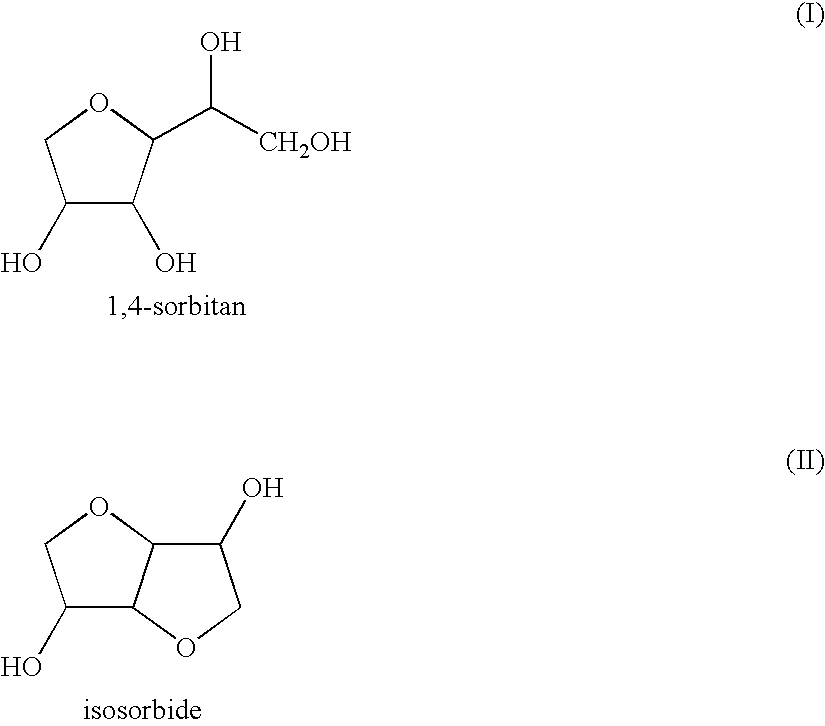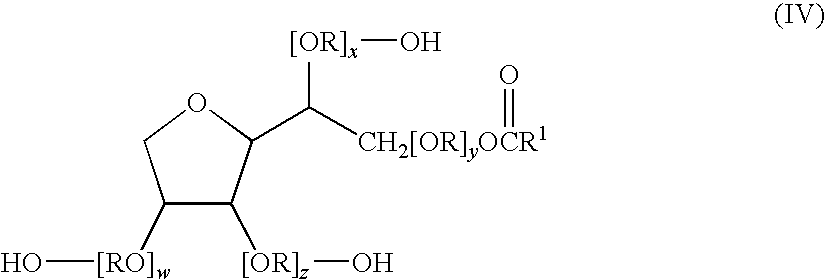Biofuel Composition and Method of Producing a Biofuel
a biofuel and composition technology, applied in the field of biofuel composition and production method, can solve the problems of high easy to burn, and increase the solvent power of methyl ester
- Summary
- Abstract
- Description
- Claims
- Application Information
AI Technical Summary
Benefits of technology
Problems solved by technology
Method used
Image
Examples
example 1
New Generation Hi-Pressure Injection Diesel
[0140]A fuel mixture is prepared from the following components:[0141]1500 grams vegetable oil or fat; and[0142]900 grams water (e.g., tap water); and[0143]400 grams denatured ethanol 90° (180 proof); and,[0144](a) 30 grams hydrogenated oil of ricin (castor oil);[0145]alternatively, a mixture using (b) 30 grams cetalol (cetyl alcohol) is prepared; and (c) a further alternative mixture using (a)+(b) together (30 grams total) is also prepared; and optionally,[0146]500 grams odorless paint solvent is also included in one or more of the above described mixtures.
[0147]The mixture is suitable for use with a new generation high pressure injection diesel engine. Based on current raw material costs it is estimated that the above composition costs about 204 ε / 1000L (about $0.94 / gal at current exchange rates). It is expected that the cost for producing the composition on a commercial scale will be lower. For comparison purposes, the raw material cost o...
example 2
Traditional Tractor-Type Low-Pressure Injection Diesel
[0148]A fuel mixture is prepared from the following components:[0149]1100 grams vegetable oil; and[0150]500 grams water; and[0151]250 grams ethyl alcohol (180 proof); and[0152]25 grams hydrogenated castor oil; or cetalol (cetyl alcohol); or mixture of castor oil and cetalol; and[0153]25 grams paint thinner.
[0154]The mixture is suitable for use with a traditional tractor-type low-pressure injection diesel engine. Based on current raw material costs it is estimated that the above composition costs about 243 ε / 1000L (about $1.12 / gal at current exchange rates). It is expected that the cost for producing the composition on a commercial scale will be lower.
example 3
Modified Traditional Tractor-Type Low-Pressure Injection Diesel
[0155]A fuel mixture is prepared from the following components:[0156]1100 grams vegetable oil;[0157]900 grams water;[0158]250 grams ethyl alcohol (180 proof);[0159]25 grams (a) hydrogenated castor oil; or (b) cetalol or a mixture of (a) and (b);[0160]300 grams odorless paint thinner.
[0161]The mixture is suitable for use with a modified traditional tractor-type low pressure injection diesel engine.
PUM
 Login to View More
Login to View More Abstract
Description
Claims
Application Information
 Login to View More
Login to View More - R&D
- Intellectual Property
- Life Sciences
- Materials
- Tech Scout
- Unparalleled Data Quality
- Higher Quality Content
- 60% Fewer Hallucinations
Browse by: Latest US Patents, China's latest patents, Technical Efficacy Thesaurus, Application Domain, Technology Topic, Popular Technical Reports.
© 2025 PatSnap. All rights reserved.Legal|Privacy policy|Modern Slavery Act Transparency Statement|Sitemap|About US| Contact US: help@patsnap.com



